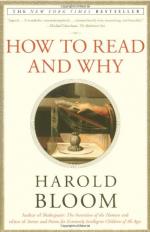|
This section contains 2,138 words (approx. 6 pages at 400 words per page) |

|
Chapter 3 Summary and Analysis
Introduction: Bloom says that novels are different from short stories and poems, because the novel seems to portray a recognizable social reality that depends on each individual reader's perspective. "There will still remain the pleasure of repetition [rereading], and of keeping civilization alive." (p. 143). Bloom says that the novel might have a darker future than the lyric poem, which will always survive, since "novels require more readers than poems do." (p. 144).
Miguel de Cervantes: According to Bloom, "Don Quixote" is "the first and best of all novels." (p. 145). Shakespeare, Bloom says, had read "Don Quixote", but Cervantes had probably not read Shakespeare. Confining himself to the central relationship between Don Quixote and Sancho Panza, Bloom says that nothing like this intimacy exists in literature. The ongoing conversations between Don Quixote and Sancho Panza are mutually illuminative, as the two friends come...
(read more from the Chapter 3 Summary)
|
This section contains 2,138 words (approx. 6 pages at 400 words per page) |

|




